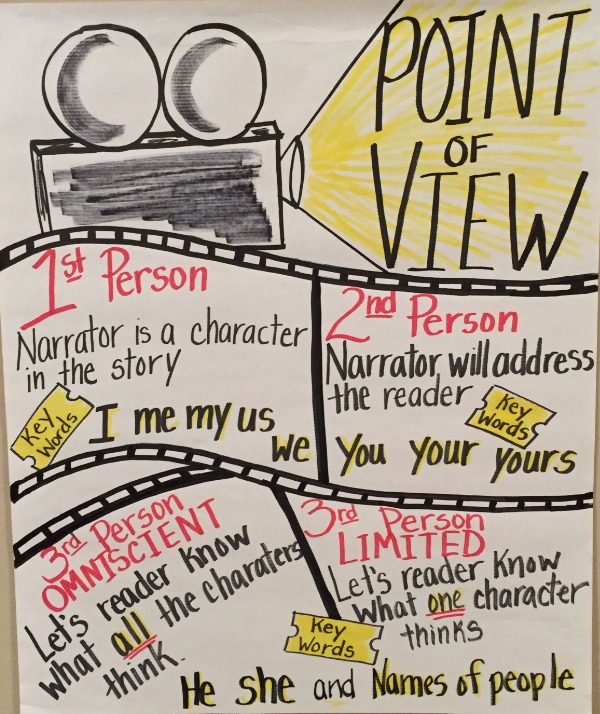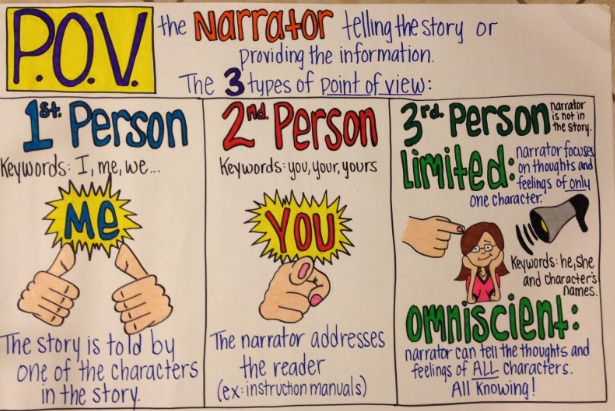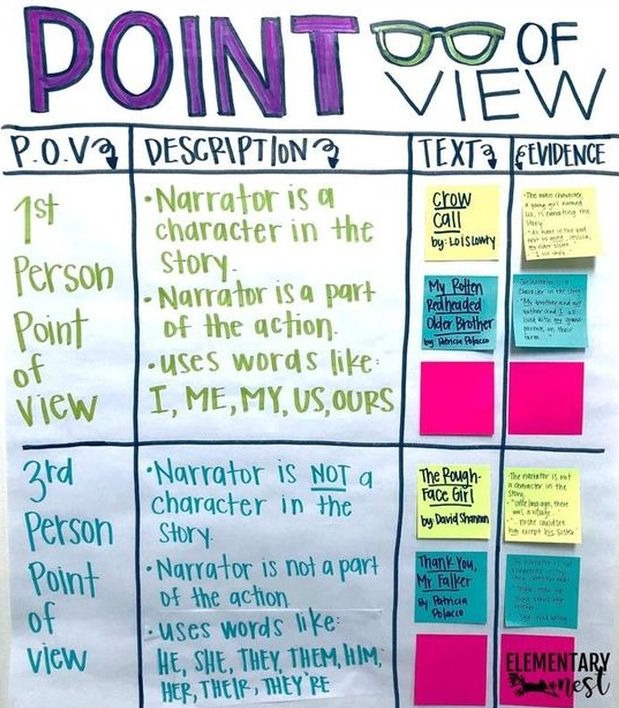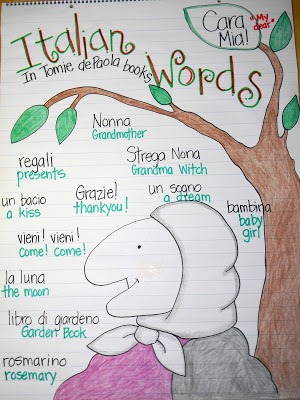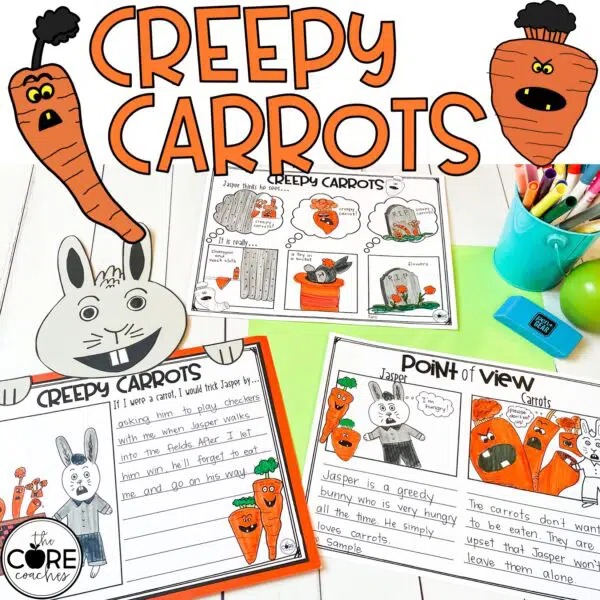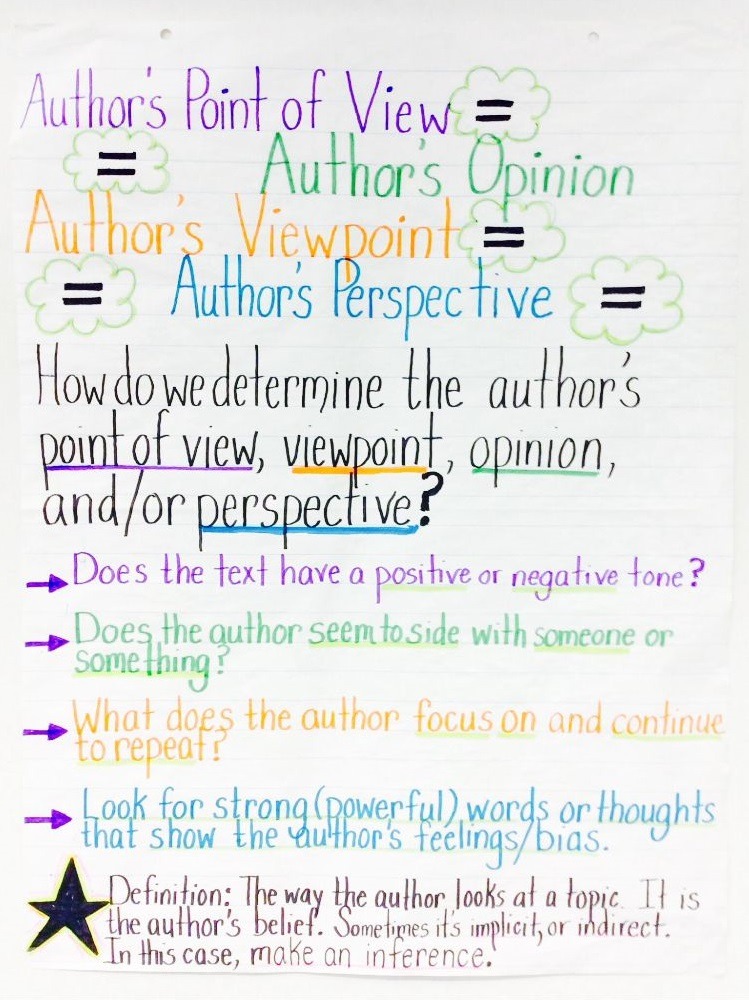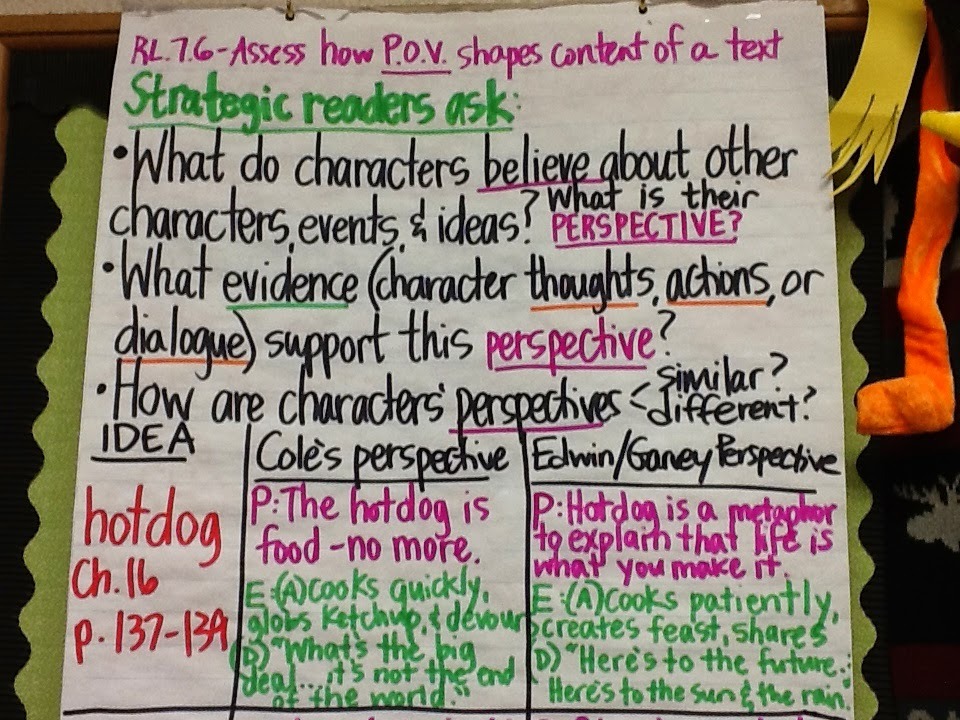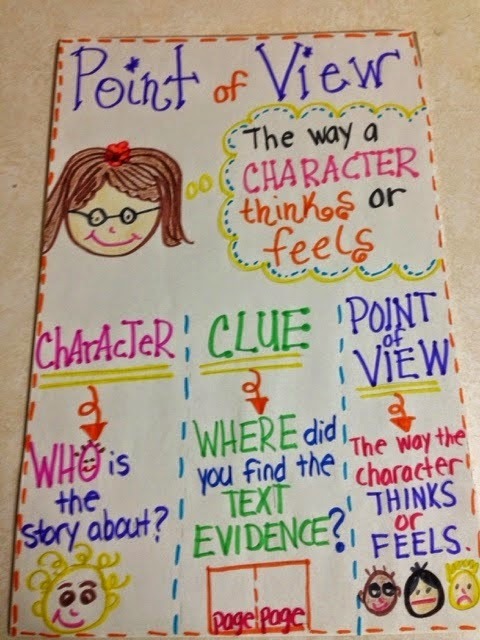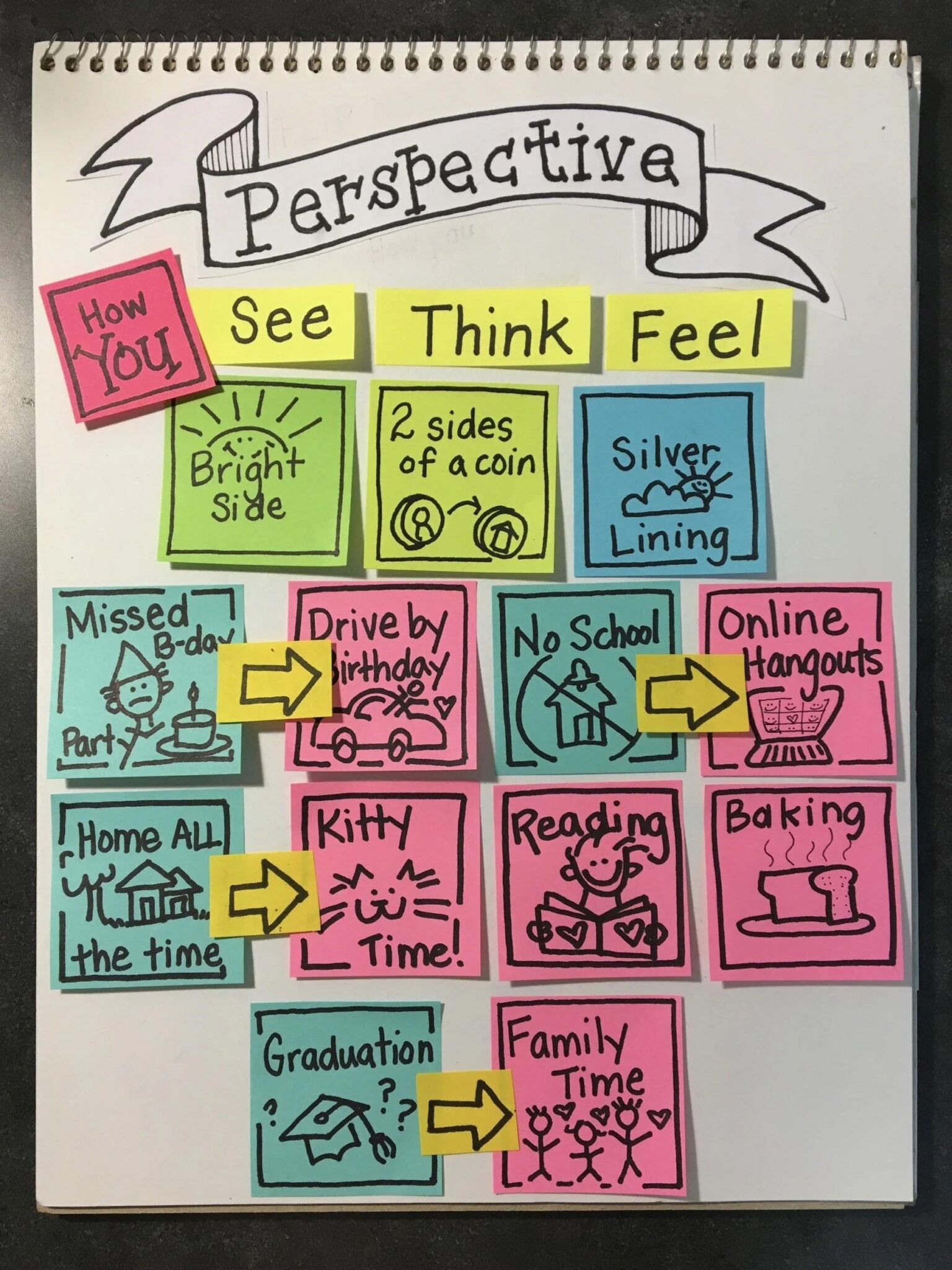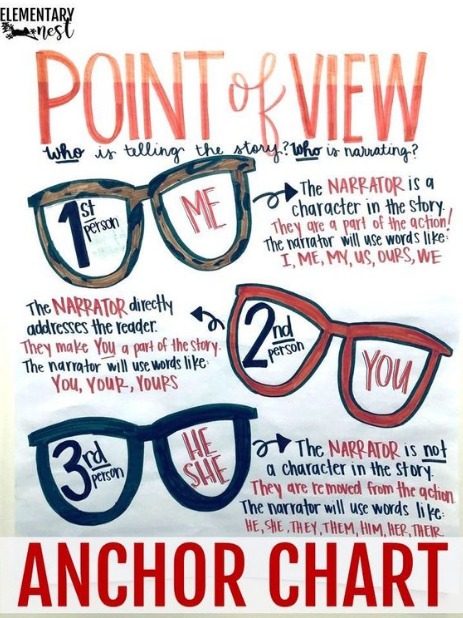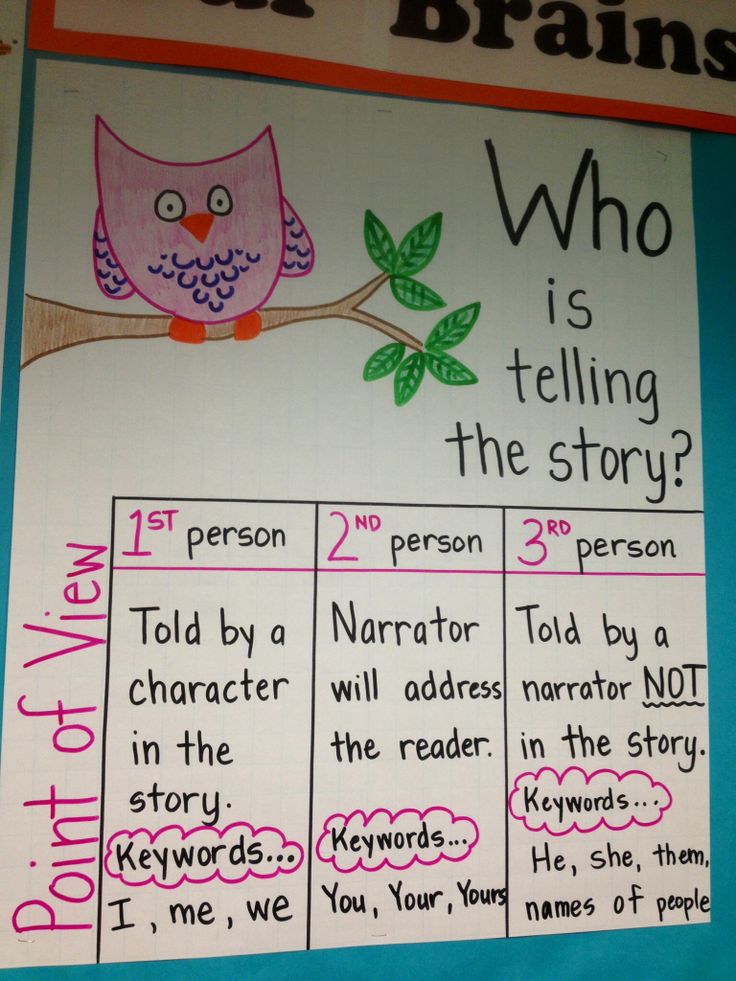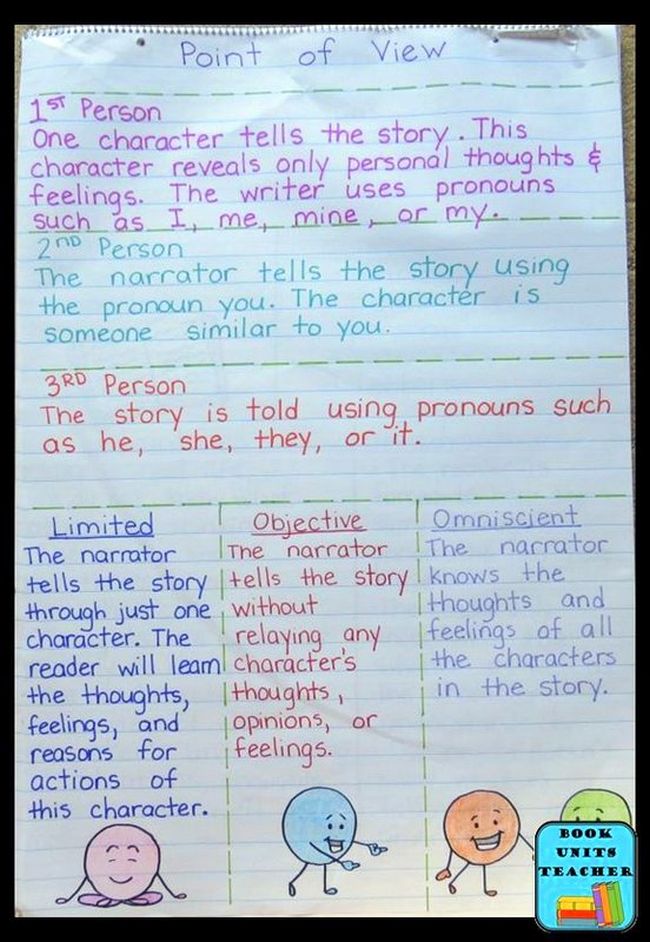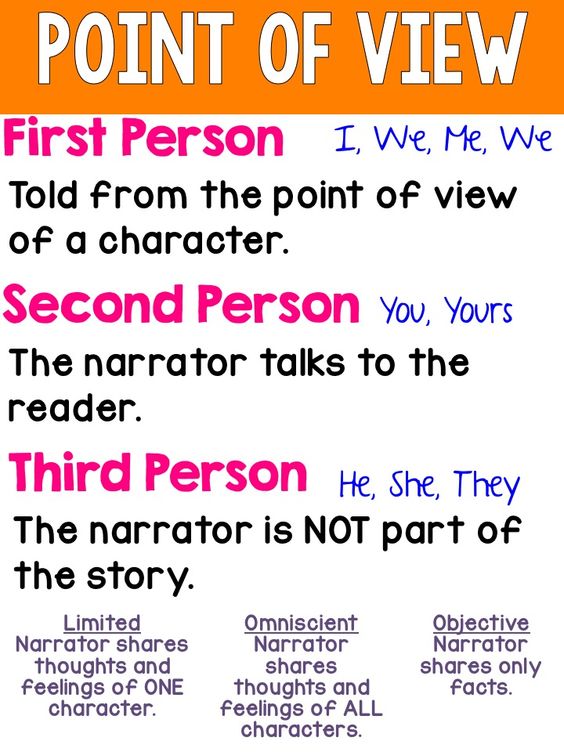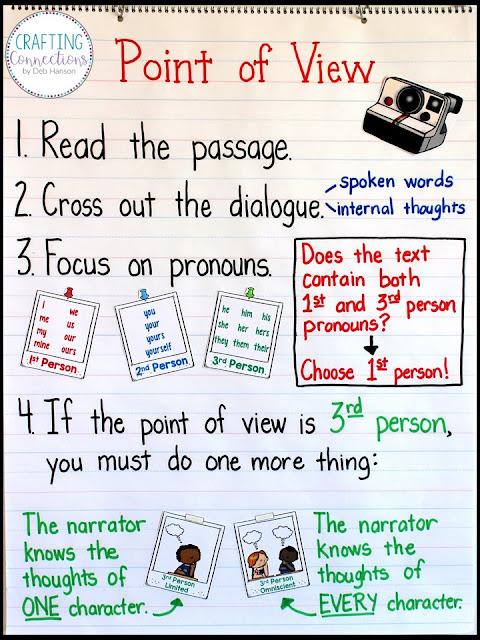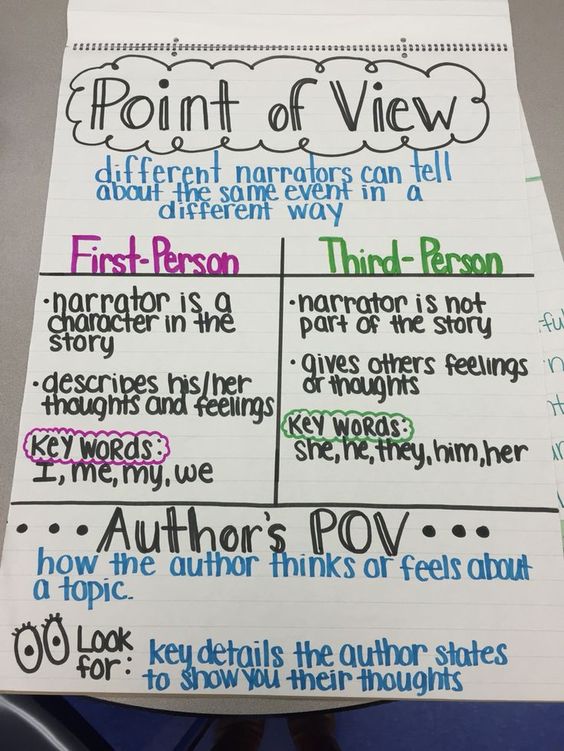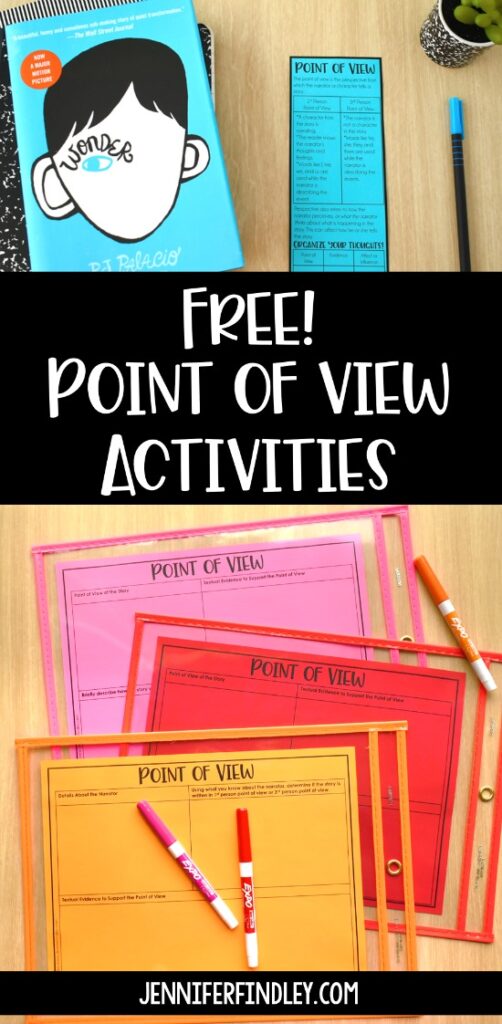One of the primary jobs of a teacher is to keep students focused on the task at hand, be it learning a new skill or gaining new knowledge. Today, teachers can use dozens of different materials to help them out, including lesson plans, games, ebooks, and worksheets.
One such helping hand comes in the shape of anchor charts, a material that allows students to visualize the information and gives them something they can always go back to for help. We’ll give you a rundown on a point of view anchor chart and show you how to find them online easily.
What’s a Point of View Anchor Chart?
Point of view anchor charts focus on the perspective from which an author tells their story. Unlike main idea or theme anchor charts, an author’s point of view anchor chart is more versatile, and you can use the same one for multiple stories or books you’re covering. This can help students find the same trends in different writing styles.
The two main types of anchor charts for point of view are:
- Who is telling the story anchor chart
- Narrator anchor chart
Who Is Telling the Story Anchor Chart
When it comes to who is telling the story anchor charts, you should turn students’ attention to the actual perspective of the story, meaning:
| Story Perspective | Pronouns Used |
| First person | I or we |
| Second person | You |
| Third person | He, she, it, and they |
Depending on the grade you’re teaching, the aim of these charts will vary. For instance, a point of view anchor chart for the 2nd grade will teach children to recognize the pronouns easily and understand the correlation between the narrator and the protagonist.
Older students will learn more advanced POV aspects. You can find a point of view anchor chart for the 5th grade that students can use to learn about an author’s approach to the story.
For example, you can give them a chart that will show the pros and cons of each perspective. A first-person POV can show us the character’s inner thoughts, while a third-person POV can talk about events unknown to the protagonist or describe someone’s character.
Narrator Anchor Chart
Narrator anchor charts describe different types of narrators and what they bring to the table. They usually focus on the third-person POV to show the difference between a:
- Limited narrator
- Objective narrator
- Omniscient narrator
You can hand out empty anchor charts for students to fill out with differences they spot during comparisons of different stories. This is a great way to make your lesson interactive and get students to develop their critical thinking.
Elements of a Good Point of View Anchor Chart
As with any good anchor chart, begin with a succinct title that lets students know immediately what information is being disseminated.
If necessary, go into more depth with a subheading or definition. For example, “First person means the narrator speaks to the reader from their own point of view, making them a character within the story.”
Examples are always a smart way to convey ideas in an anchor chart. For teaching first person, you might want to list the pronouns students will see when something is written in this point of view, such as “I,” “we,” and “us.”
Visual appeal is important in an anchor chart, as well. Some anchor charts use color to help convey meaning and draw attention. Others use drawings to illustrate an example, or just to make the anchor chart more fun. Either route, a clear, well-designed layout will be important to the visual appeal of your anchor chart, as well as its ability to quickly convey the message.
Use the below resources from Teach Simple and other teachers to print off for your classroom, or to help inspire the creation of your own point of view anchor chart.
POV Anchor Charts—Design Ideas
Think of anchor charts as a learning aid. They should be visually stimulating and provide students with a context through which they can understand and memorize new information. An anchor chart on point of view should be designed to bring narration and its aspects closer to students.
Kids these days are way more familiar with cinematography than with literature. Still, both can be considered as an art of storytelling, so why not make that connection and use a movie theme?
You can also have a different approach and avoid a movie theme, but you should still try to make it colorful and visually appealing. Use clip art and draw as many details without going overboard and making them too distracting.
If you want to design your own point of view anchor chart, you should also think about how you will use it in class. If you want it to be interactive, consider incorporating sticky notes with various traits that students can add to columns for each POV.
Download High-Quality Point of View Anchor Charts Made by Teachers
Don’t have the experience to create a point of view anchor chart by yourself, or simply lack the time or will to spend hours making it playful and engaging? Don’t worry—you can always rely on the internet to provide the materials, as long as you choose a source that guarantees quality.
Join Teach Simple and find thousands of point of view anchor charts and lesson plans about narration that will help you get your ideas across and keep your students engaged and motivated to learn. All our anchor charts are created by experienced teachers who’ve been in your position and know what you need to get your students focused.
Resources from Teach Simple
- Who Is Telling The Story? Anchor Chart By First In Line
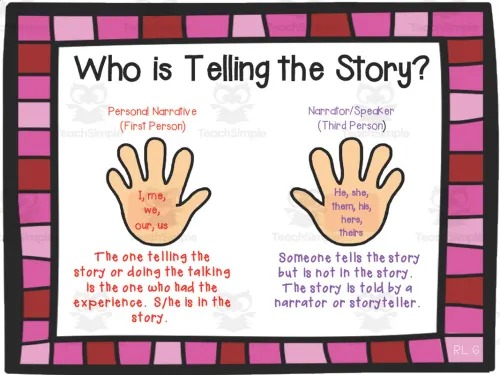
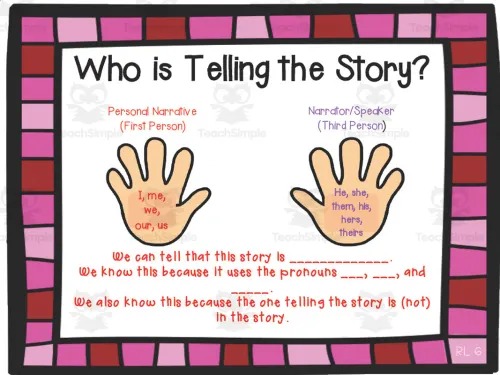
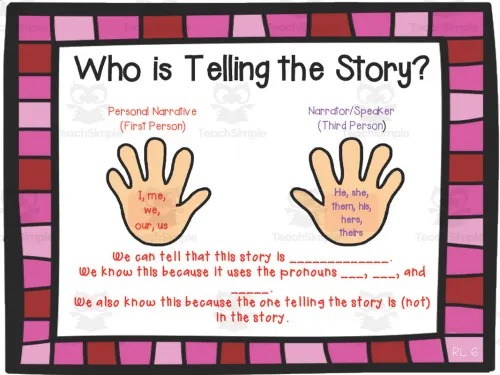
GRADE 2, 3, 4, 5
This PDF package comes with four pages: one page is a complete anchor chart that sets up the difference between first and third person with a definition and a few example words for each. Another anchor chart gives the definitions. The package also comes with a corresponding anchor chart with blank spaces for students to complete.
- Editable Point Of View Anchor Char By First In Line
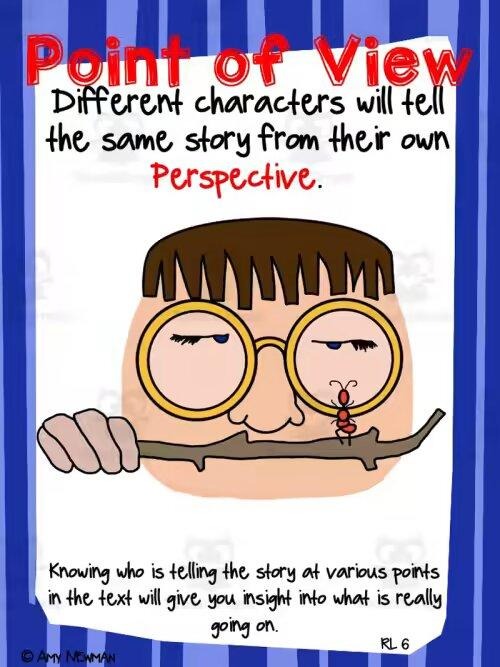
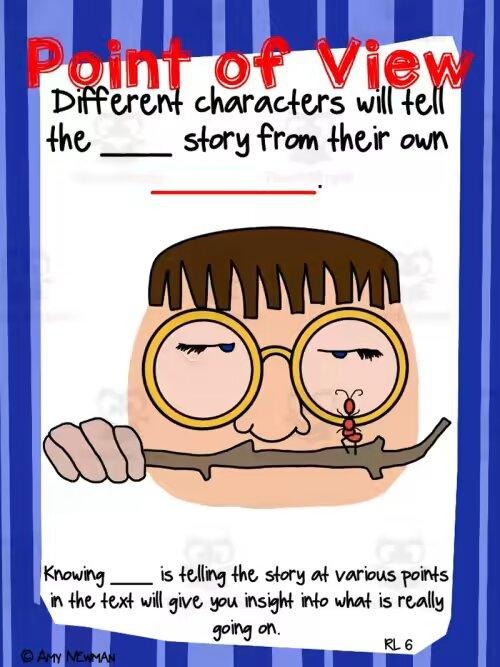
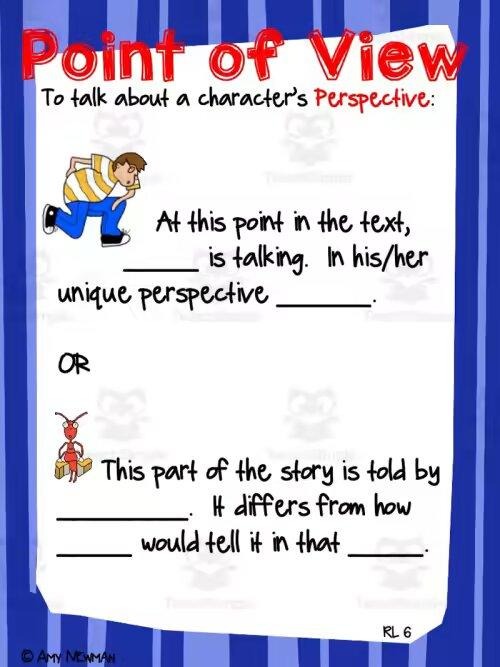
KINDERGARTEN, GRADE 1, 2, 3
This resource is an editable Microsoft PowerPoint. It contains complete anchor charts as well as copies that leave blanks for students to fill in the missing words.
Examples from Other Teachers
What is the author’s or characters’ opinion?
- Author Study: Tomie DePaola From Around The Kampfire
In this blog post, teacher Linda Kamp breaks down an author study of Tomie DePaola, the author of the popular Strega Nona book series. Kamp goes into depth in this article with activities pertaining to problem-solving, Italian words, and making connections, all using Strega Nona. But at the very top of her post, you will find an excellent point of view anchor chart. It breaks down the author’s point of view based on his actions and experiences.
- Creepy Carrots Opposing Points Of View From The Core Coaches
This anchor chart is simple, but it’s very effective. It uses the book Creepy Carrots to illustrate how an event (eating carrots) can be something great from one character’s perspective (a hungry bunny) while being horrible from another character’s perspective (carrots that don’t want to be eaten.
- Author’s Point Of View From Lumos Learning
This anchor chart begins with several phrases that are synonymous for the concept of the author’s opinion. What a great way to define a concept! Often, one way of describing something will make sense for one student, while another student needs to hear it in a different way for it to click. The anchor chart then goes on to give ways we might determine an author’s point of view.
- Comparing Two Perspectives From Life In 4
This is another anchor chart that provides an example of how the same event can be viewed from very different perspectives depending on who the “character” is. In this example, the characters are kids and their parents, and the event is a snow day. So immediately kids from cold climates can relate to the feeling of excitement over a snow day, and can maybe also recall a parent stressed out at having to call into work because of it.
- Whimsical Point Of View Chart From Miss Moehle’s Second Grade Classroom
This anchor chat is enjoyable because it’s so colorful and fun. Simplicity is often a good choice, but the quirkiness of this one is sure to be memorable to Miss Moehle’s students.
- Flipping Our Perspective From Stenhouse
Delightfully chaotic, this anchor chart draws the viewer in! It also lists many possible elements that may shape a character’s experience of the world, and thus their outlook on it.
- Who Is Telling The Story? By Elementary Nest
Three different pairs of glasses illustrate the three main points of view a story can be narrated from with definitions and examples. This anchor chart presents a lot of information, but the visuals provided by the glasses helps keep it aesthetic and easy to digest.
- Cute Owl Chart From We Are Teachers
This anchor chart is great for its simplicity. First, second, and third person are separated into three columns containing pithy definitions for each, and easy-to-understand examples. And of course, it has a cute owl perched at the top, keeping this anchor chart a little bit fun, too. After all, you’re trying to determine “who” is telling the story!
- Learn Point Of View Details From We Are Teachers
Point of view can be understood simply as “first person,” “second person,” or “third person.” That’s a great start for students just learning. But there is a little bit more to it than that, particularly when we get to third person. Third person can further be broken down into “limited,” “objective,” and “omniscient,” as this anchor chart explains.
- Effective Use Of Color From Ashleigh’s Education Journey
This is a good example to draw inspiration from because it uses color so effectively. Each category of words is given the same color. This helps students understand first, second, and third person quickly.
- Step-By-Step Guide To Determining Point Of View By Crafting Connections From Deb Hanson
You can read Deb Hanson’s entire blog post about teaching point of view as well, but definitely check out her anchor chart presented as a step-by-step guide to determining the point of view a story is written in.
- Point Of View Example Sentences From Book Units Teacher: Educational Materials For Upper Elementary
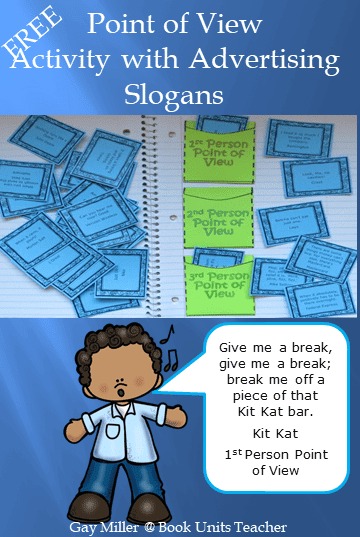
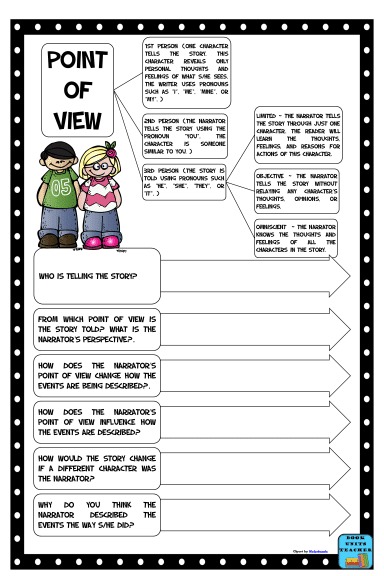
This link contains an entire blog post with six ideas for teaching point of view in literature. Number six contains an anchor chart. It gives definitions and then an example sentence for each. The cool thing is that the example sentence is exactly the same character, action, and feelings, just told from the different points of view.
- Point Of View: 5th Grade Style From The Brown Bag Teacher
Aimed at 5th graders, this anchor chart goes over first, second, and third person perspectives. Bonus points for offering potential effects for each point of view, illustrating why an author might choose one over another.
- Both Definitions For Point Of View From Mrs. Hannah’s 3rd Grade
This anchor chart gives a side-by-side explanation with examples of first person vs third person. Underneath that, it also includes a section on an author’s point of view, and how to infer what it is from what’s in the text.
Free Resources
- Point Of View Bookmarks And Worksheets By Jennifer Findley
For grades 4 and 5, this awesome printables package was created by teacher and blogger Jennifer Findley. The PDF includes bookmarks, posters, small group activities, and more to help you teach point of view to your students. Check out her full point of view blog post for more info and ideas.
Final Thoughts on Point of View Anchor Charts
It can be a little confusing what is meant by “point of view.” Are we talking about the pronouns used throughout the text? Or are we talking about the opinions and mindset of the author or characters? You can see how these things are interrelated, and thus are both described as point of view, or perspective. So it’s useful for students to have these definitions handy. And as it is very easy to forget first, second, and third person, an anchor chart organizing each category and listing pronouns will be a helpful reminder.

